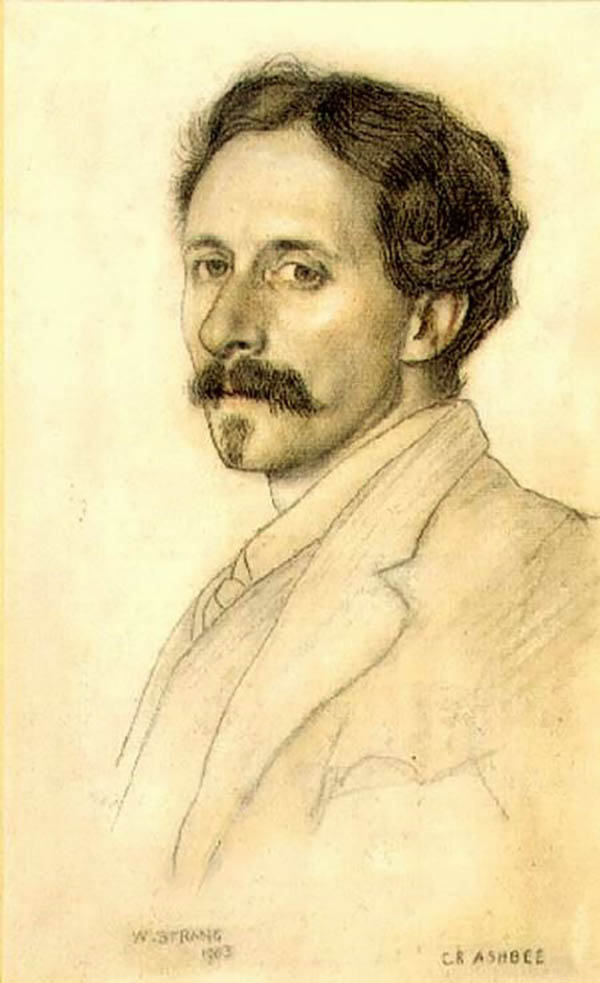Charles Robert Ashbee (May 17, 1863 - May 23, 1942) was an English Arts and Crafts Movement designer. After William Morris (1834 - 1896), Ashbee became the champion of the Arts and Crafts Movement. He was born to a prosperous professional family in Isleworth, just west of London. Ashbee has been described as a 'half-Jewish, Anglican, bisexual, married, Socialist, conservationist, romantic, rebel, fop, and self-described practical idealist'. He studied at Wellington College and, in 1888, shortly after graduating, established the Guild and School of Handicraft. In 1890, the guild expanded to workshops at Essex House, Mile End Road, in the East End. In 1897, he established the Essex House Press to continue the work of William Morris's Kelmscott Press. After Morris's 1896 death, he purchased Kelmscott's Albion printing presses and employed one of the Kelmscott compositors, Thomas Binning. The Guild and Press ran into financial trouble in 1902 and relocated to the charming Cotswold town Chipping Campden, where they operated until they had to fully liquidate in 1907. The press was taken over by one of Ashbee's friends, the Sri Lankan philosopher Ananda Coomaraswamy, who operated it until it fully shut down in 1910. Ashbee moved on to other enterprising, including writing and government work. In 1918, Ashbee was appointed civic adviser to the British Administration for Palestine, within the Occupied Enemy Territory Administration, later Mandatory Palestine, overseeing building works and the protection of historic sites and monuments as the chairman of the Pro-Jerusalem Society. He remained in this position until 1922. Ashbee died in 1942 at Sevenoaks and was buried at St Peter and St Paul's Church in Seal, Kent, where he was church architect.

